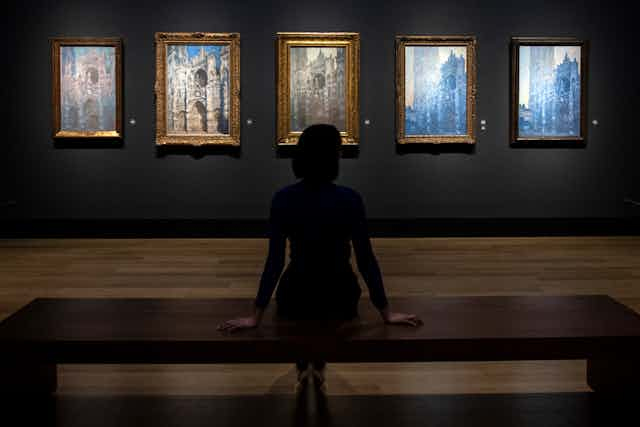The exhibition Monet & Architecture has opened at London’s National Gallery to critical acclaim. But it has also caused controversy – over the price of admission.
For the first time in its history, the museum has raised ticket prices above £20 for a ticket bought on the spot, with amounts varying between £18 and £20 if booked in advance online. According to the gallery, the price varies depending on the day of visit and the method of booking, and can be as much as £22.
Major British newspapers and broadcasters, including the The Times, The Guardian and the BBC picked up on this price hike. In doing so, they reignited the seemingly neverending debate over whether and how much a museum should charge visitors to see their exhibitions.
But the uproar about increasing ticket prices is misguided. First, it is a well-known fact that museums struggling with funding cuts need to find alternative revenue streams. Staging blockbuster exhibitions with paid entry fees is one of the most successful ways for public institutions to supplement their public funding.
This show, the first Monet exhibition in the UK for more than 20 years, features a number of works which are highly relevant to London visitors, including many London city scenes previously unseen in the capital. And with Claude Monet making a regular appearance in the top ten of the most popular artists of all time, the exhibition will undoubtedly attract a huge number of visitors.
It would be a missed opportunity for the museum not to charge the equivalent of other popular attractions in the city – around the same cost of a West End cinema ticket (and you rarely hear cinemas criticised for not showing films for free). People are often prepared to pay for peak prices – whether it’s air travel or entertainment. The National Gallery knows its audience will pay that price – so why not charge them?
Also, according to research commissioned by the Association of Independent Museums in 2016, and backed up by other studies, entrance fees do not deter visitors – nor do they increase or decrease visitor diversity.
If we take that into account, it is much more crucial to ask a different question which is astonishingly overlooked in the debate. What is the National Gallery doing to engage visitors who might not think of attending one of their shows?
On this subject, sadly, the picture seems rather more bleak. On the National Gallery’s website, scheduled events relating to the exhibition are also rather pricey. A guided walk of “Monet’s London” comes in at £32.
Artistic license
Of around ten events connected to the exhibition, none seems to creatively engage with anyone other than the gallery’s core audience of tourists and the middle class. All “family” events – the only other specific audience group the museum seems to attempt to engage with – relate to the permanent collection.

Returning to finances, there are barely any financial incentives notable in regard to discounts. The National Gallery’s website does not list any discounts for students, school pupils, the unemployed or the over 65s. Only children under 12 are free with a paying adult. So a family of four with teenagers would spend £88 visiting the exhibition at the weekend.
While it is not surprising that a national museum must charge in order to fund its yearly blockbuster shows, and while we can acknowledge that the museum calculates the ticket prices taking into account a wide number of factors “such as the costs involved in mounting that particular show”, important questions remain unresolved.
And the biggest question of all is: does the gallery actively welcome anyone other than the affluent middle classes and tourists? Looking at the National Gallery’s programming, pricing and lack of outreach, it would seem that the notion of inclusivity does not feature prominently within the art covered walls of its proud building on Trafalgar Square.

